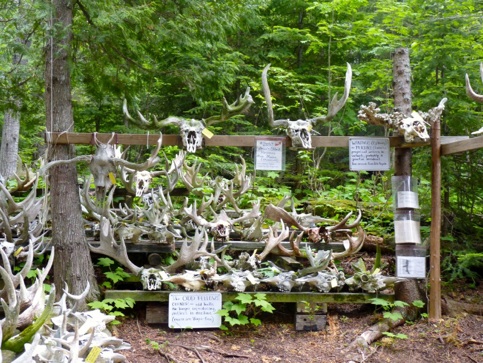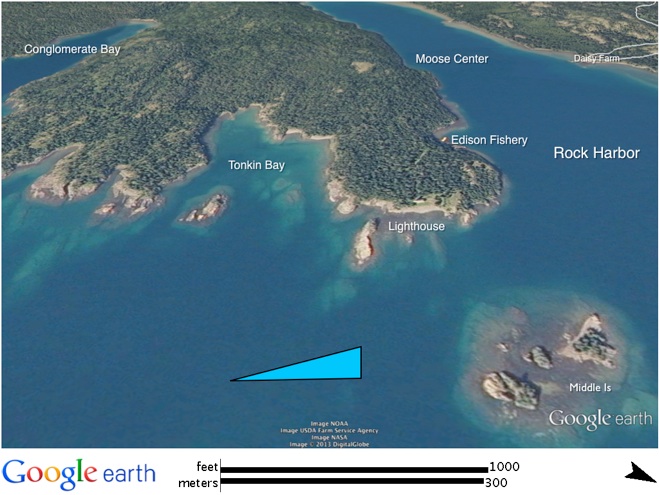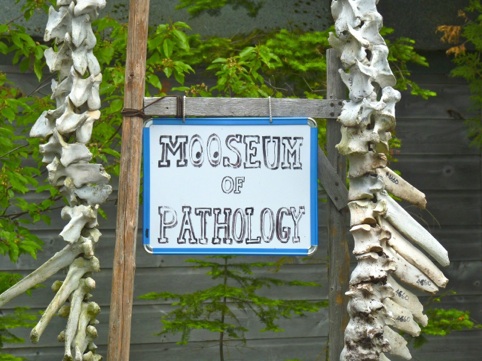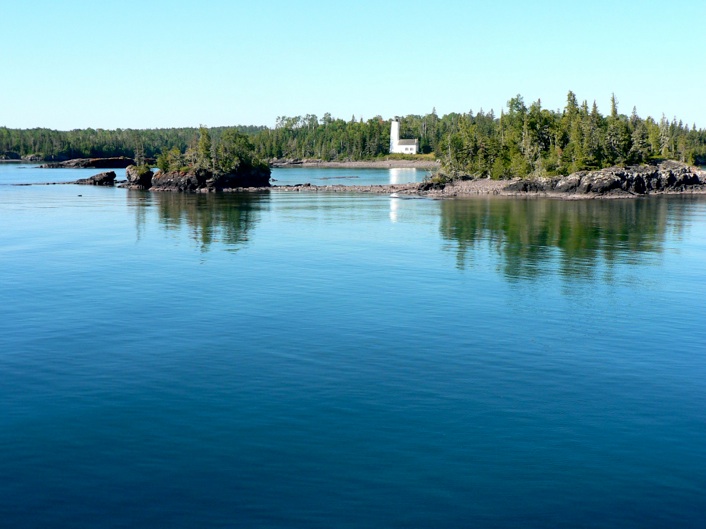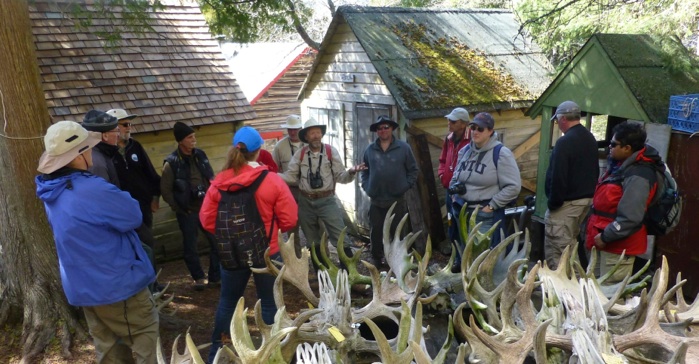Edison's Fishery and The Lighthouse
The fishery itself is a restored camp that is occupied each summer by a retired Lake Superior fisherman and his family; this man is employed by the park to interpret what life was like here during the heyday of Isle Royale Fishing camps, from before the establishment of the park in 1936 until the sea lamprey invasion of the 1950s.
The lavas that underlie the site of the fishery and the lighthouse are a sequence of 45-50 ophitic
flows, which occur between the Scoville Point flow (psp) and the overlying CHC. As we walk around the point we will see several flow tops exposed, good examples of cellular amygdaloids.
This is an excellent place to find greenstone, a nodular, compact form of pumpellyite that is prized as a semi-precious gemstone (Huber 1983, see pp 58-9). The geological purpose of stopping here is to look at the flow sections along the wave-washed shoreline, following it from this point to Tonkin Bay. We can also look at the amygdule mineral suite, which can
be found on the pebble beaches. The amygdules of Isle Royale's flows contain a variety of secondary minerals, listed alphabetically (by Huber) as barite, calcite, chlorite, copper, datolite, epidote, laumontite, natrolite, prehnite, pumpellyite (chlorastrolite or greenstone), quartz (agate), and thomsonite (see this link for information about each). The prehnite is unusual in that it contains disseminated native copper inclusions and has a pink color, which has caused some to confuse it with thomsonite (Huber 1969). Overall, the assemblage is zeolite facies and prehnite-pumpellyite facies, representing a slightly lower grade than much of the Keweenaw Peninsula area. This lower mineralization temperature may partially explain the lower abundances of native copper on Isle Royale than the amounts found on the Keweenaw Peninsula.


